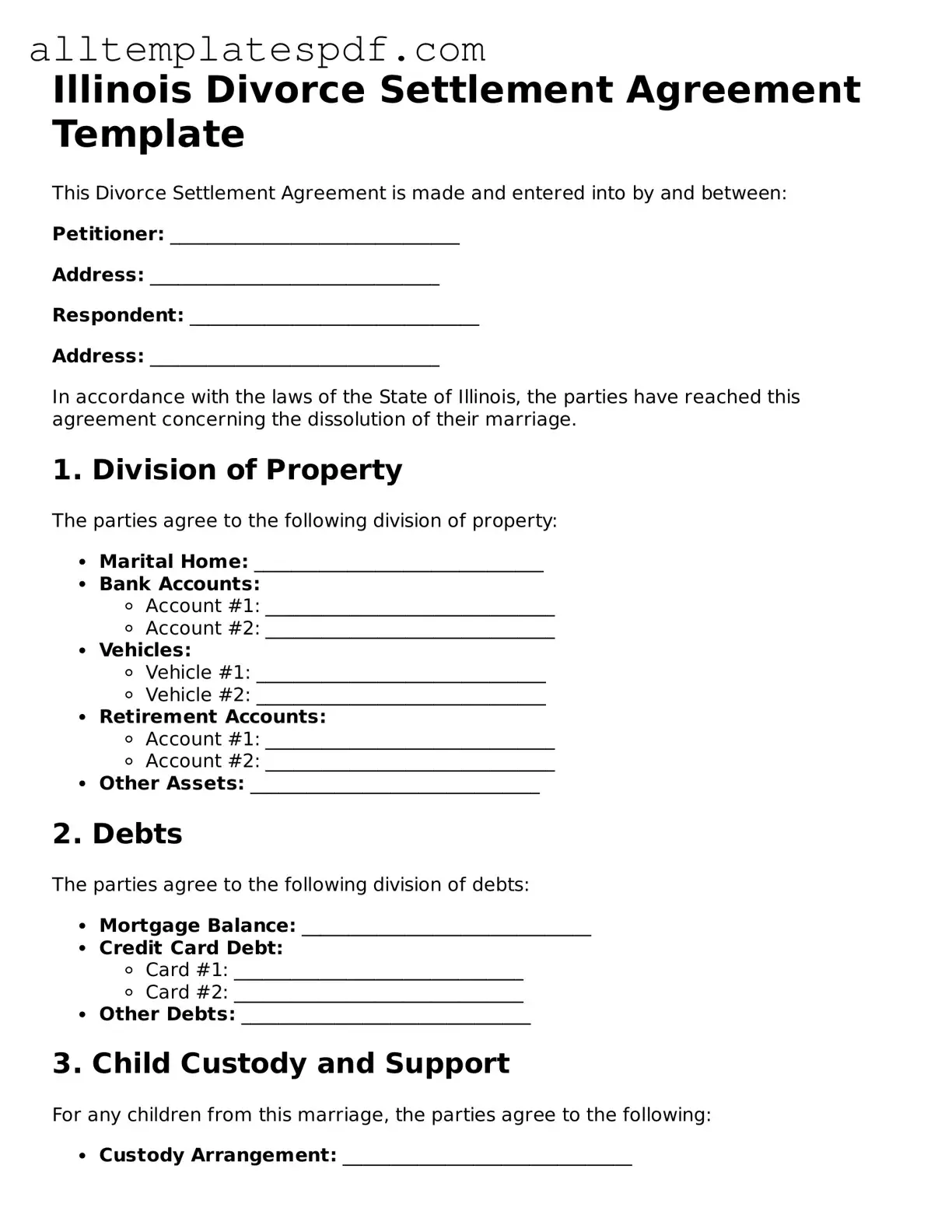Filling out the Illinois Divorce Settlement Agreement form can be a daunting task, and many individuals make common mistakes that can complicate the process. One frequent error is not fully understanding the terms of the agreement. It’s crucial to grasp the implications of each section, as misunderstandings can lead to disputes later on. Take the time to read and comprehend what you are signing, as this document will outline your rights and responsibilities.
Another common mistake is failing to provide complete and accurate information. Incomplete forms can delay the process and may even lead to a rejection of your agreement. Double-check all entries, ensuring that names, dates, and financial figures are correct. It’s better to take a little extra time to verify your information than to face complications down the line.
People often overlook the importance of including all assets and debts in the agreement. Omitting any significant items can create problems in the future. Both parties should be transparent about their financial situations to avoid misunderstandings. A comprehensive list helps ensure that everything is accounted for, making the separation smoother.
Another mistake is neglecting to address child custody and support issues thoroughly. These are sensitive topics that require careful consideration. Failing to outline parenting responsibilities and financial obligations can lead to conflicts. It’s essential to discuss these matters openly and reach a fair agreement that prioritizes the well-being of the children involved.
Many individuals also underestimate the significance of legal advice. While it may be tempting to fill out the form without consulting a lawyer, this can be a costly mistake. A legal professional can provide valuable insights and help you navigate the complexities of divorce law, ensuring that your rights are protected.
Not considering future changes is another common oversight. Life circumstances can change, and it’s wise to include provisions for modifications in the agreement. Whether it’s changes in income or shifts in parenting responsibilities, having a plan in place can save both parties from future disputes.
Additionally, people often rush through the negotiation process, leading to hasty decisions. Taking the time to discuss and negotiate terms can lead to a more equitable settlement. Patience can pay off, as a well-considered agreement is likely to be more satisfactory for both parties.
Lastly, failing to sign and date the agreement properly can invalidate it. Ensure that all required signatures are present and that the document is dated correctly. This final step is crucial for the agreement to be legally binding, and overlooking it can lead to unnecessary complications.
